Battle of the 4 TB NAS Drives: WD Red and Seagate NAS HDD Face-Off
by Ganesh T S on September 4, 2013 6:00 AM EST- Posted in
- NAS
- Seagate
- HDDs
- Western Digital
- Enterprise
Performance - Raw Drives
Prior to evaluating the performance of the drives in a NAS environment, we wanted to check up on the best-case performance of the drives by connecting them directly to a SATA 6 Gbps port. Using HD Tune Pro 5.0, we ran a number of tests on the raw drives. The following screenshots present the results for the various drives in an easy-to-compare manner.
Sequential Reads
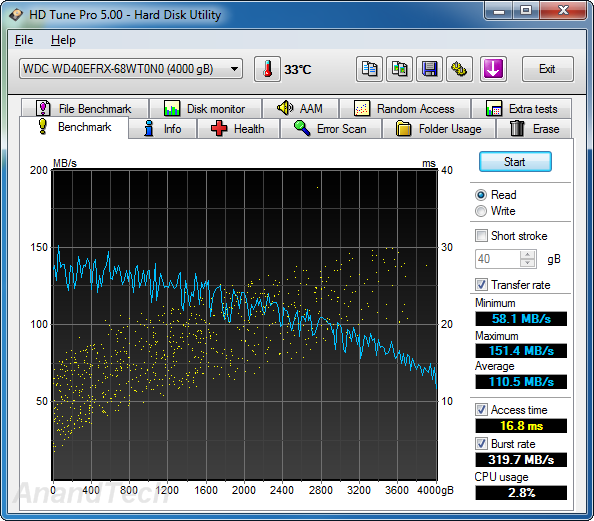
The WD Se and WD Re drives, as expected, lead the benchmark numbers with an average transfer rate of around 136 MBps. The Seagate unit (135 MBps) performs better than the WD Red (111 MBps) in terms of raw data transfer rates, thanks to the higher rotational speed. However, the burst rate of the Seagate NAS HDD is much lower than that of the WD Red. This is probably because the DDR2 memory used in the WD drives is clocked higher than the one in the NAS HDD.
Sequential Writes
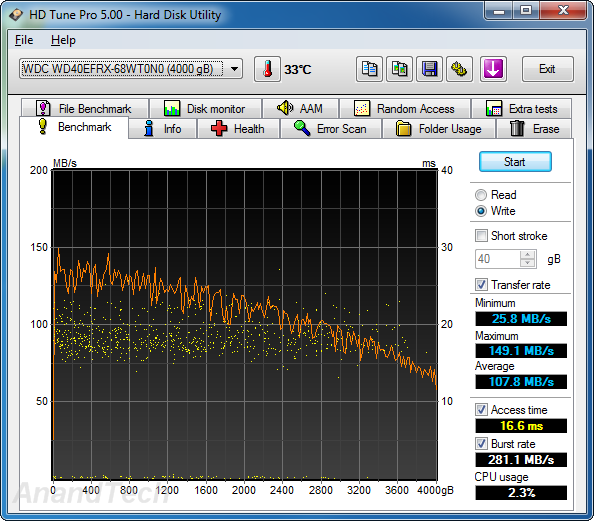
A similar scenario plays out in the sequential write benchmarks. The WD Re leads the pack with an average transfer rate of 135 MBps and the WD Se follows close behind at 133 MBps. The WD Red comes in at 108 MBps and the Seagate NAS HDD clocks in at 131 MBps. The on-board cache in the WD series is faster than that on the Seagate unit, leading to better burst rates.
Random Reads
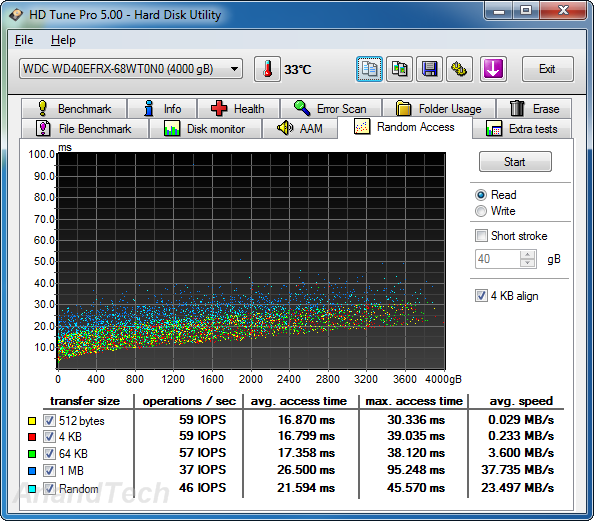
In the random read benchmarks, the WD Red and Seagate NAS HDD perform fairly similar to each other in terms of IOPS as well as average access time. The WD Re edges out the WD Se despite similar rotational speeds and platter structure.
Random Writes

The differences between the enterprise-class drives and the consumer / SOHO NAS drives is even more pronounced in the random write benchmark numbers. The Seagate NAS HDD loses out in terms of both IOPS and average access time to the WD Red. WD Re and WD Se perform much better in this scenario.
Miscellaneous Reads
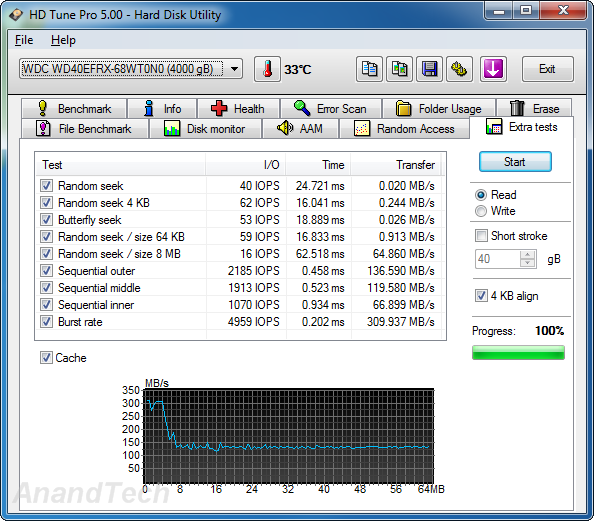
HD Tune Pro also includes a suite of miscellaneous tests such as random seeks and sequential accesses in different segments of the hard disk platters. The numbers above show the WD Red and Seagate NAS HDD matched much more evenly with the NAS HDD emerging slightly better in quite a few of the tests. The cache effects are also visible in the final graph.
Miscellaneous Writes
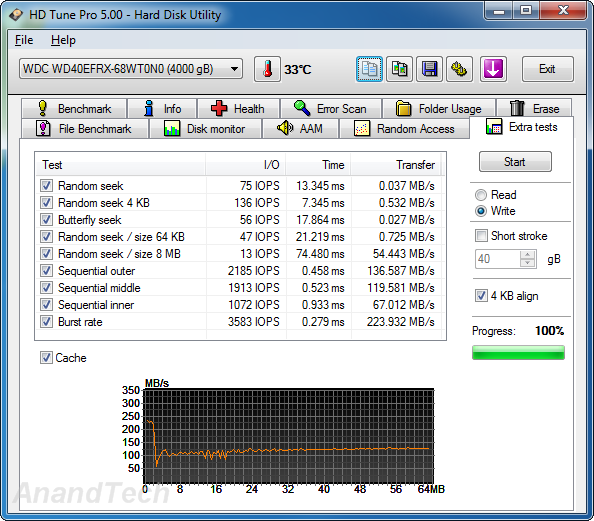
Similar to the previous sub-section, we find that the WD Red edges out the Seagate NAS HDD in the 4KB random seek test, but loses out in a majority of the other tests which are heavily influenced by the rotational speed.
We now have an idea of the standalone performance of the four drives being considered today. In the next section, we will take a look at the performance of these drives when placed inside a typical SOHO / consumer NAS.










54 Comments
View All Comments
Wwhat - Tuesday, September 10, 2013 - link
Doing a 'torture test' means you use them a lot constantly though, not that you put them on a burner to see what happens.And frankly a drive should adhere to its stated lifetime/performance somewhat regardless how heavy you use it.
And don't forget that all drives unless powered down spin constantly anyway.
And quite a few NAS boxes for the home have so-so cooling, so it would be valid to test how hot HD's get during intensive (but normal) use.
chubbypanda - Thursday, September 26, 2013 - link
Ganesh, rated reliability for WD Se is also 1 per 10E15 (see http://www.wdc.com/wdproducts/library/SpecSheet/EN... ), same as Re.Oller - Friday, October 11, 2013 - link
I am planning to buy a Drobo 5N as a Plex video server and also for TimeMachine backup. That would seem to require limited data transfer.From the review it would seem that the Red is just as good as the RE and at nearly half the price would be the better choice.
Do you agree that the Red is a better choice than the RE for my needs?
chrcoluk - Thursday, November 17, 2016 - link
Some bait and switching going on.I own 4 WD red's all 3TB versions.
First 2 purchased 2 years ago, they report NCQ supported, 4k sectors, security mode, and have no drive parking.
Brought 2 more yesterday. Dont support NCQ (wtf?), drive parking same as green drives, one is bigger than the other has a few extra LBA blocks and reports an extra gig size and 512byte sectors instead of 4k.
Totally bizzare.